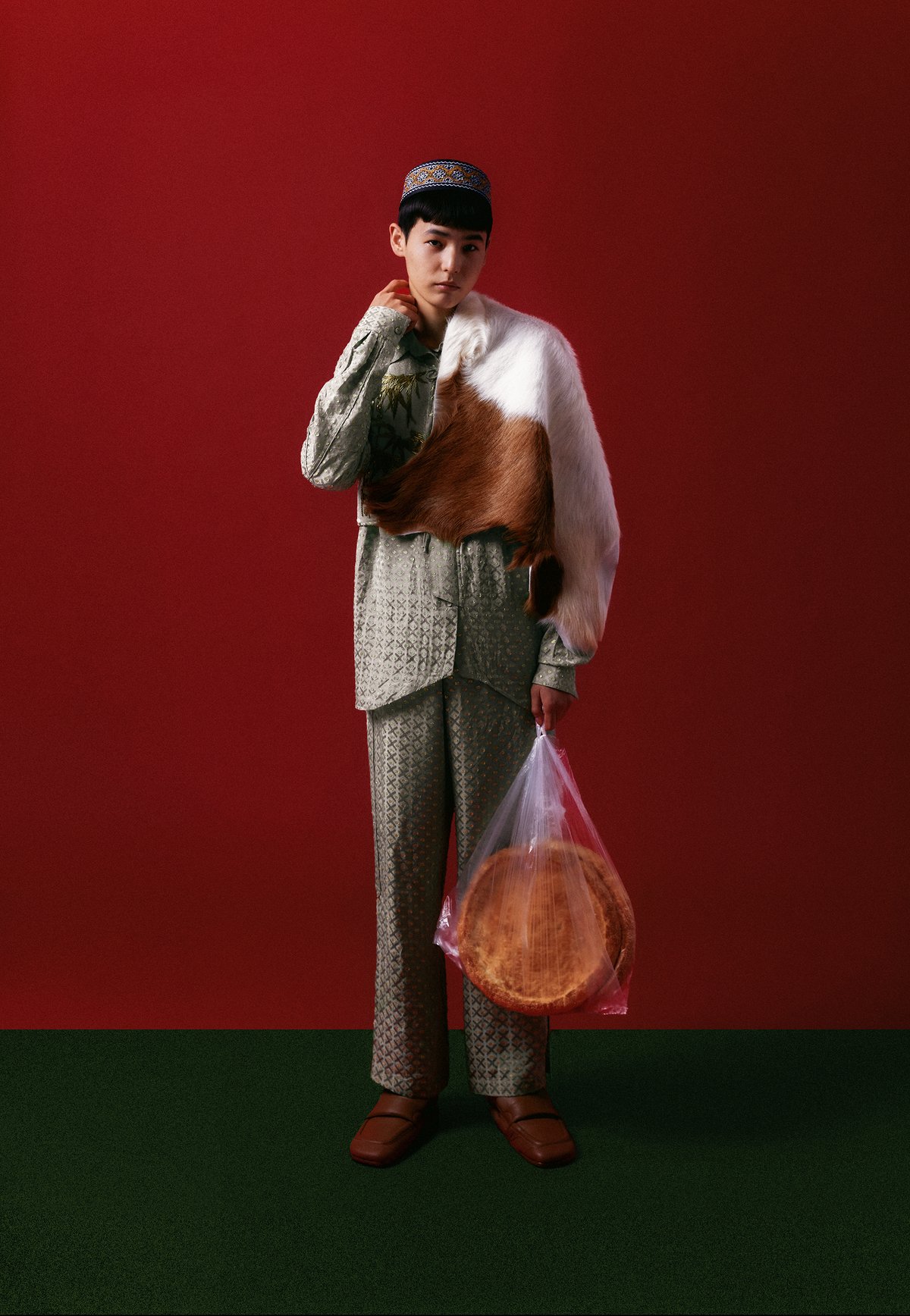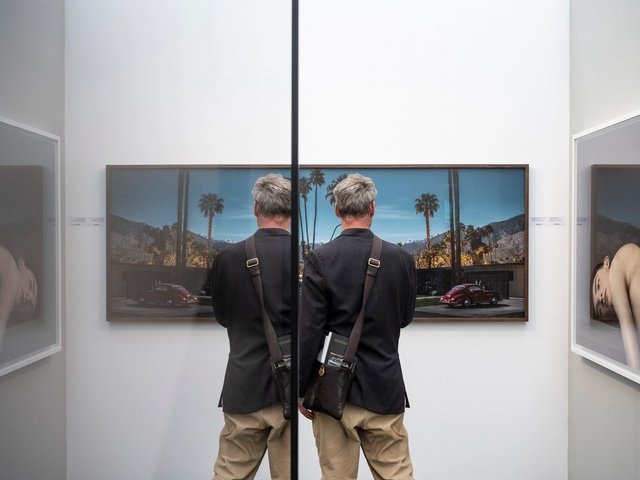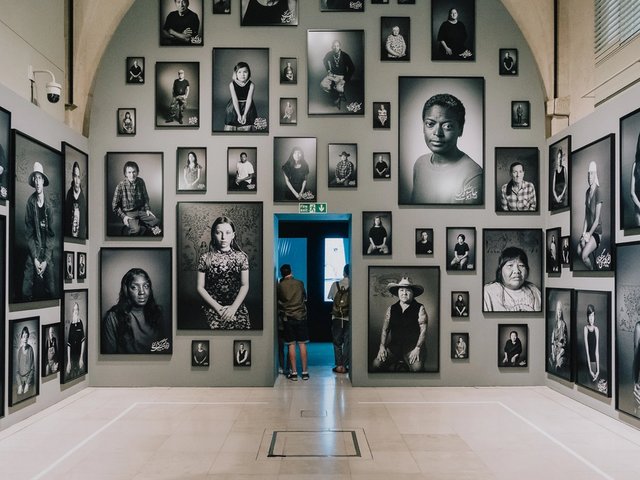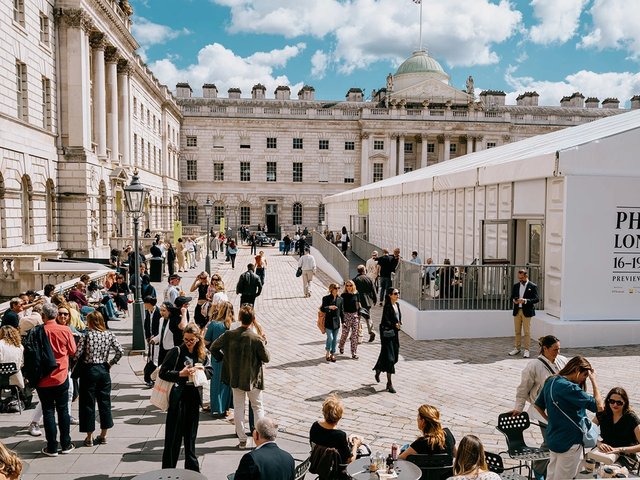Huillen Ma, Gaotai Gallery, Shanghai Photofairs
The Chinese artist Huillen Ma grew up in Southern Xinjiang, in a multiethnic family compound that belonged to a TV station. “I was fascinated by my Uyghur neighbours when I was young, especially the unique beauty of their daily lives,” Huillen says in a statement.
At Photo London, as part of a presentation by Shanghai Photofairs, Huillen and Gaotai Gallery are showing Uruklyn (2021; $2,000-$5,000, edition of 11), a photograph of a young Uyghur man wearing a mix of contemporary and traditional Uyghur clothing.
In recent months, China’s alleged human rights abuses and possible crimes against humanity against Uyghurs in Xinjiang’s detention camps has come under scrutiny, though Huillen says she hopes to add more nuance to the world’s understanding of Urumqi and Uyghur culture—from the perspective of street-level fashion. She says: “I want people to know this place and love it as I do, to feel it as I feel. And that’s also what photography means to me—to share a memory, share a new place, a culture, a lifestyle, or even a piece of clothing.”
Earlier this year, Photo London sold a 25% stake to the World Photography Organisation, which launched Shanghai Photofairs in 2014.
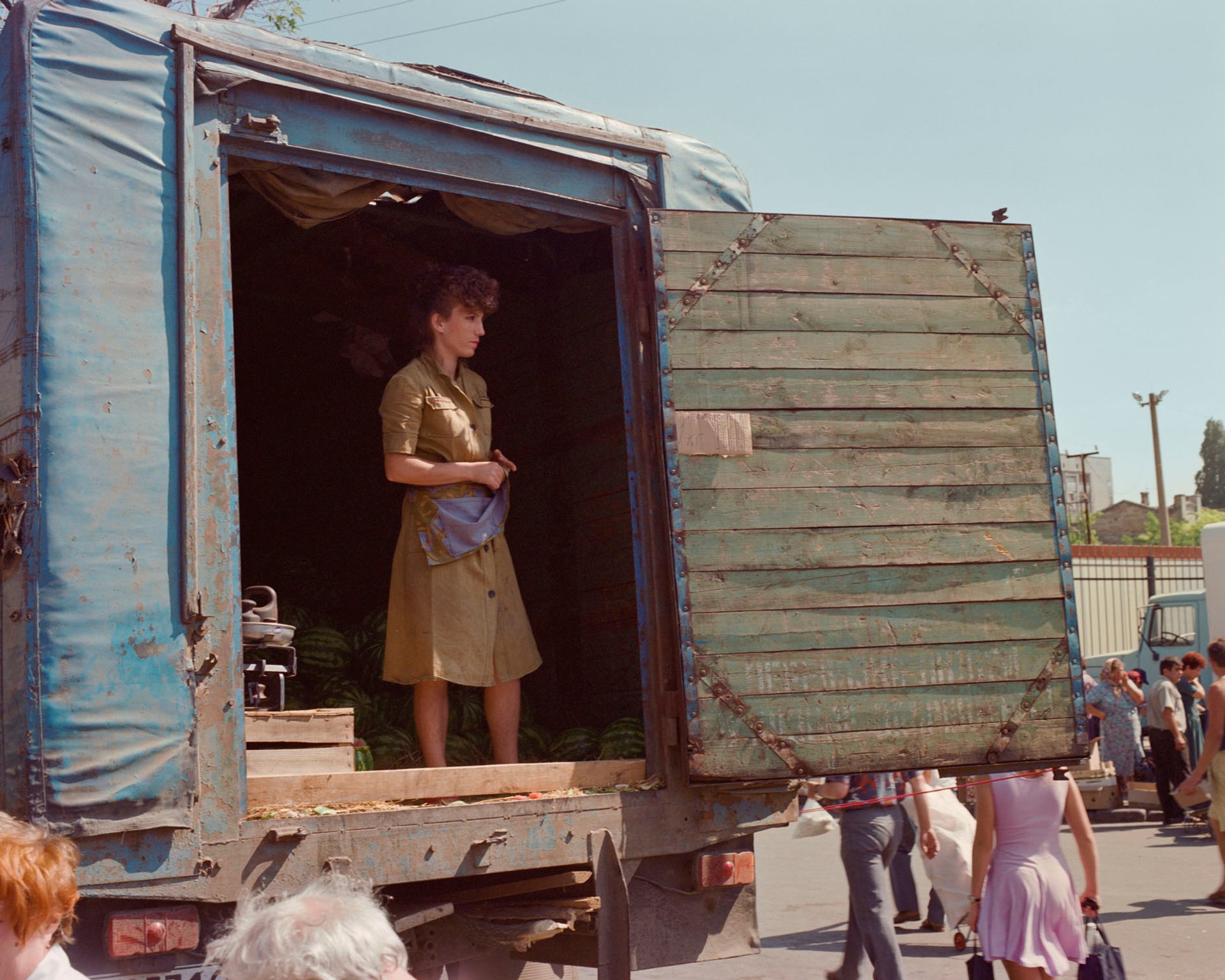
Philip-Lorca diCorcia, Odessa (1996)
Courtesy of Sprüth Magers
Philip-Lorca diCorcia, Sprüth Magers & Kharkiv School artists, Ilex Photo
In 1996, the American photographer Philip-Lorca diCorcia travelled to the Ukrainian city of Odessa, on assignment from Condé Nast Traveller. There he shot hundreds of frames, but, with the exception of a single picture, the photographs were never published and disappeared into the artist’s archive. When he saw images of Odessa under siege when Russia invaded Ukraine almost three months ago, diCorcia was immediately reminded of his trip and dug out the photographs he had taken. A selection are now on show at Photo London, priced at £225 each. All proceeds go to the British Red Cross which is providing humanitarian aid in Ukraine.
Describing the Russian invasion as “inflicting horrible pain and suffering on innocent civilians”, Sprüth Magers senior director Andreas Gegner says: “Confronted with images of the war, Philip-Lorca diCorcia had the immediate impulse to help alleviate the suffering in whatever little way he could—with his art—and together with Sprüth Magers initiated the Odessa project that he is now presenting at Photo London.”
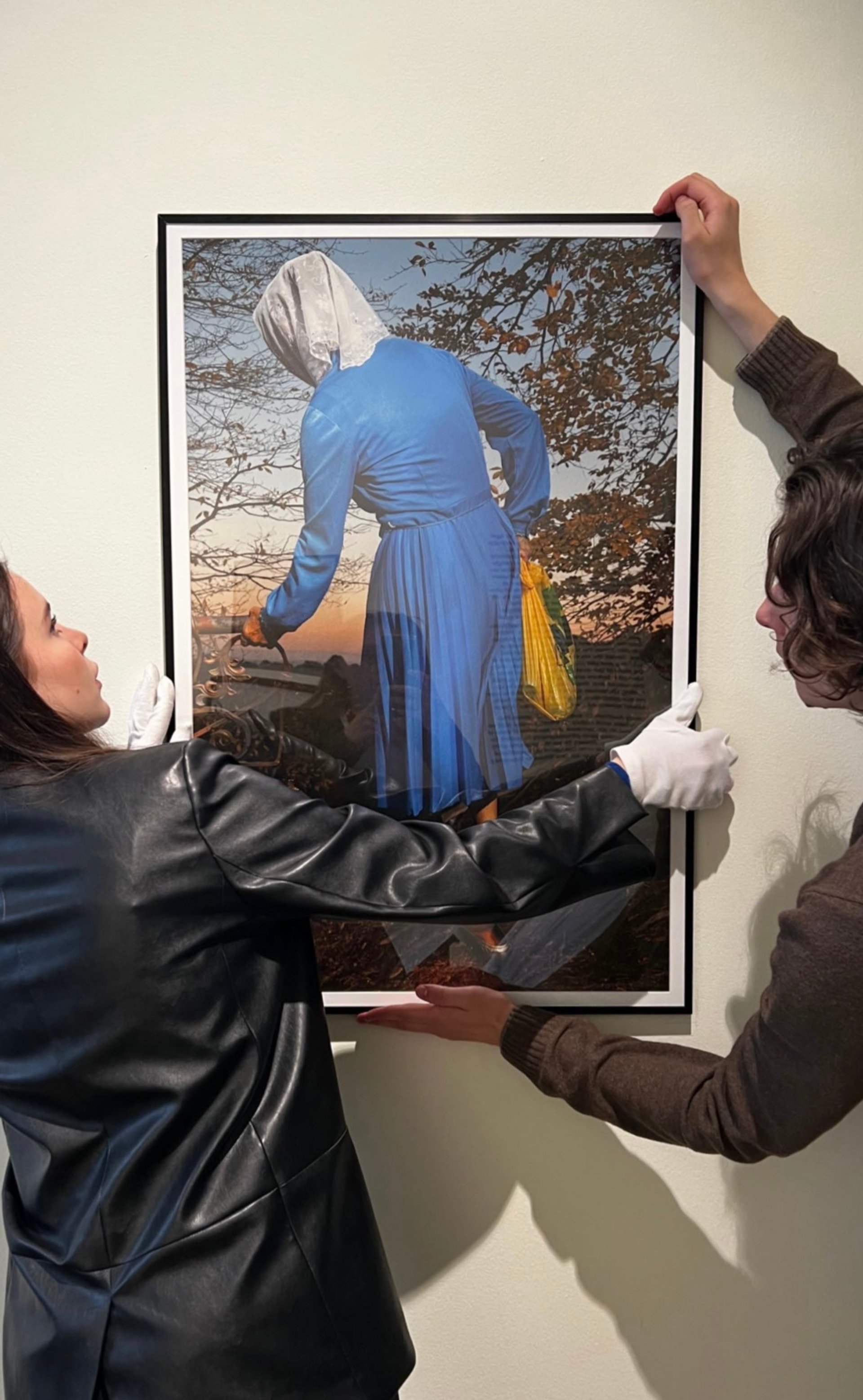
Elena Subach, Zolushka (2019)
Photo: Anna-Maria Drozd
Two other presentations highlight the war in Ukraine, including the Polish gallery Ilex Photo’s booth, which features photographers from the Kharkiv School whose works show a life before “today’s bombs and missiles”, says Anna-Maria Drozd, an independent curator working with the gallery.
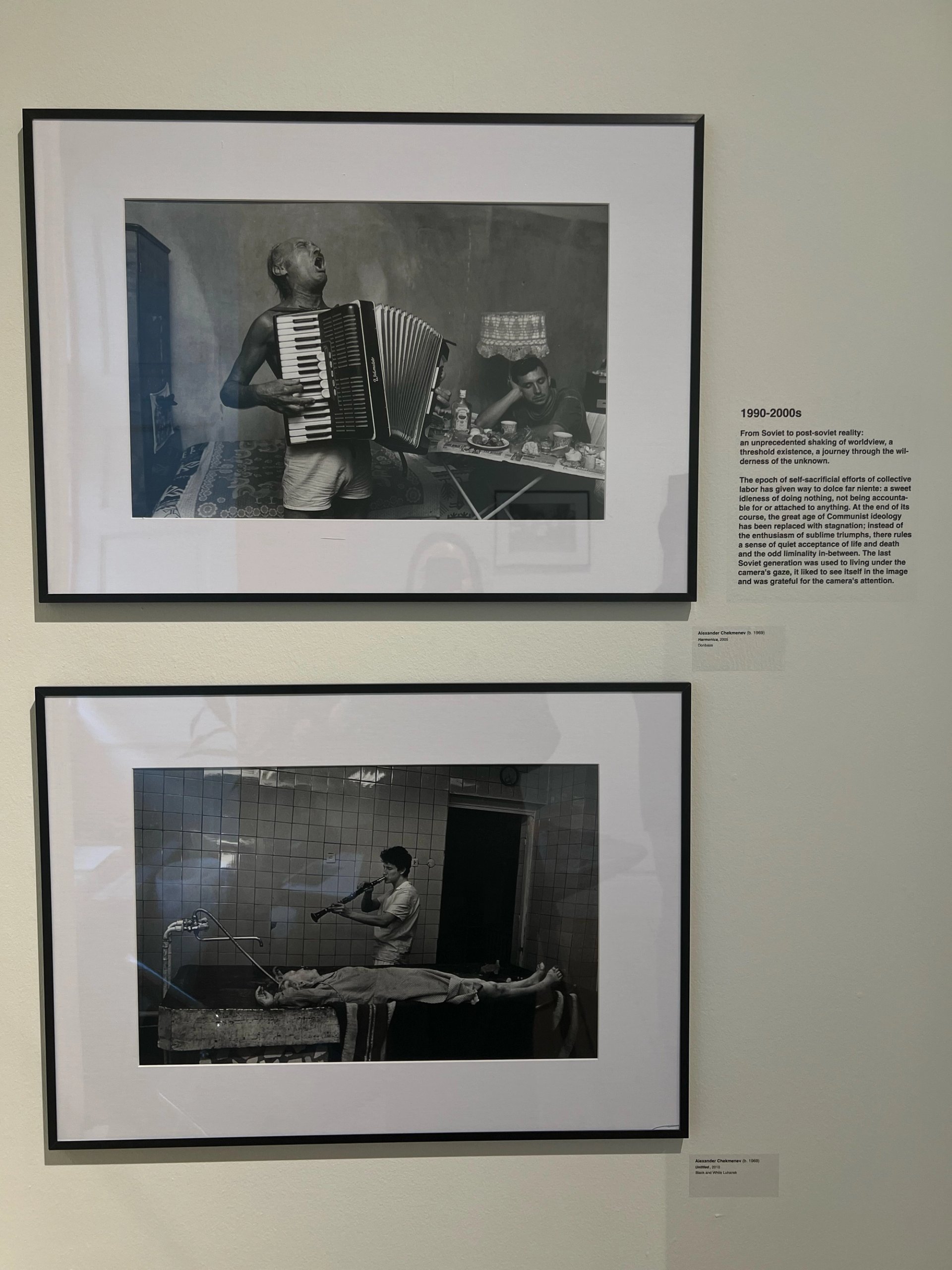
Alexander Chekmenev's Harmonica (2005, top) and Untitled (1993, bottom) Photo: Anna-Maria Drozd
These images, she adds, “give a glimpse into the beauty and mystery of its people. A Ukraine where the harshness of Soviet and post-Soviet life clashes with the tenderness of evolving and shifting national identities, where the prose of every day’s weight meets the lyrical poetry of the fleeting moment”. Prices range from €20,000-€60,000 and all proceeds go to the artists, as well as an additional 15% to the Disaster Emergency Committee fund.

An installation view of Mikhael Subotzy's work on Goodman Gallery's booth at Photo London Courtesy of Goodman Gallery
Mikhael Subotzy, Goodman Gallery
The South African artist Mikhael Subotzy came to international prominence as a photographer in the early 2000s, having created a body of work, Die Vier Hoeke(2004-05), which offers a searing look inside South African prisons, including the notorious Pollsmoor maximum security prison where Nelson Mandela spent some of his 27 years of incarceration. Works from that series are on show at Photo London alongside examples from other milestone projects—Beaufort West (2006-08) and Retinal Shift (2012), in which Subotzy began smashing the glass framing his images to interrogate the gaze. Prices range from $10,000 to $15,000.
In addition, works from Subotzky’s award-winning Ponte City project, which he created between 2008 and 2011 with the British artist Patrick Waterhouse, are on display. During this time, the pair photographed the windows and doors of every apartment in the infamous cylindrical skyscraper, which rises 55 storeys in Johannesburg. Built in 1975 at the height of apartheid as a luxury block for white people, the building came to be seen as a symbol of the violence and decay that marked South Africa’s transition to freedom and is now home to families, students and middle class African migrants. Subotzky and Waterhouse’s project encompass around 3,000 images, including archival material such as pamphlets found in the building. Among other works, a four-metre tall lightbox showing the interior windows of Ponte City is on show (priced at $100,000, edition of three).
The Photo London presentation comes ahead of Subotzy’s first UK solo show at Goodman Gallery in London next month, which includes new paintings and a new film—the third in a trilogy in which Subotzy explores what it means “to place myself in this weighty, problematic legacy we have as white male South Africans”. He adds: “I want to get inside the colonial mindset and collapse it from within.


